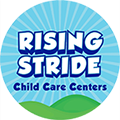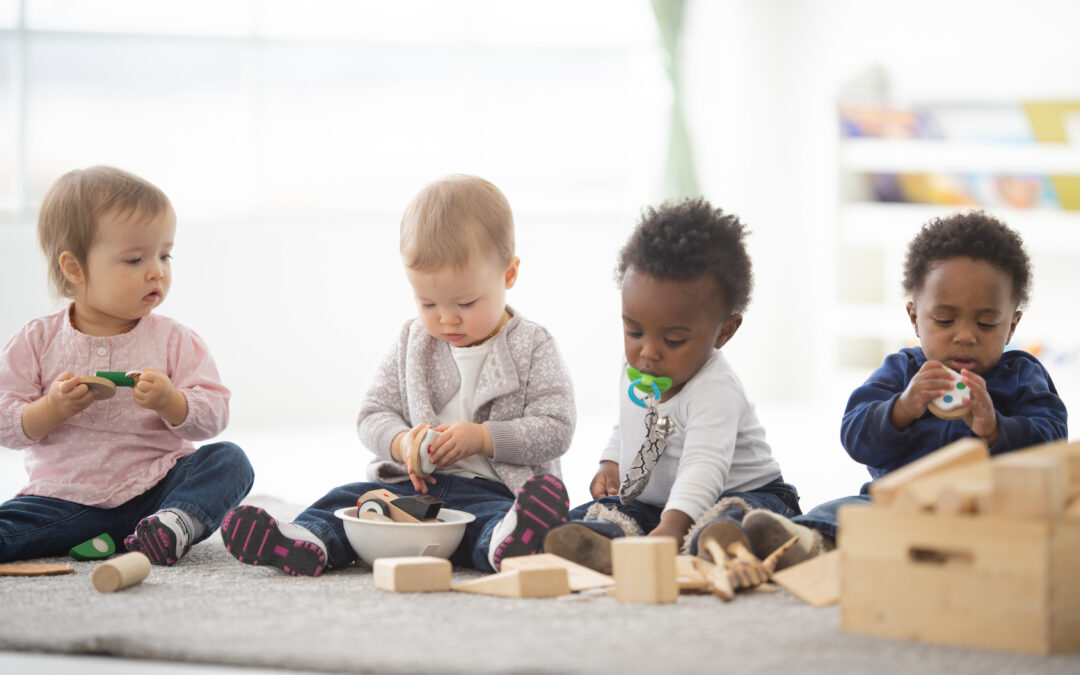One of the most visible—and inspiring—milestones you’ll see in your child’s development is the beginning of cooperative play. Within just a few years, the newborn kicking and flailing on their back (yes, it’s a form of early play!) is sharing, communicating, taking turns, and playing alongside other kids.
It’s an amazing progression, and it’s a key part of how kids develop Character, one of the 5 C’s at the heart of the Begin Approach to helping kids thrive in school and life. Kids with well-developed Character skills do better in school, experience less distress, and form healthier relationships, so skills like cooperative play matter a lot!
Examples of Cooperative Play
Whenever kids are working together to play a game or complete a task, they’re engaging in cooperative play. Play patterns can range from simple to complex, but here are a few examples you might see as cooperative play starts to emerge:
- Working together to stack blocks into a tower
- Playing tag or chasing each other around the house
- Teaming up to build a fort
- Playing a cooperative board game (like the ones from Peaceable Kingdom)
- Collaborating on a drawing with sidewalk chalk
- Pretending to be a team of superheroes, princesses, or animals on an adventure
- “Taking care” of stuffed animals or dolls together
What Cooperative Play Isn’t
Sometimes it’s easier for parents to understand what isn’t cooperative play. There are five stages of play preceding it, ranging from the unoccupied play of a newborn to the associative play of a toddler who shares toys with, but doesn’t yet work together with, a friend.
Unoccupied Play
The first stage of play is unoccupied play. This stage typically begins anywhere from birth to three months of age. Examples of unoccupied play include babies learning to kick their legs and explore their immediate surroundings.
Solitary Play
The second stage of play is solitary play. In this stage, kids begin to play alone with toys and do activities in a more organized capacity.
This is a normal, healthy part of development and prepares kids for future play with others.
Onlooker Play
Stage three is onlooker play, in which kids observe others playing. Similar to “people watching” in adulthood, observing helps kids understand social interaction and the unwritten rules of playing with others.
6 Cooperative Play Ideas to Try with Your Child
1. Build a Fort
While we often talk about cooperative play meaning kids working together, kids can also play cooperatively with you! Building a fort, whether it’s indoors or outdoors, is a fun way to bond. This activity helps foster cooperation skills, expands your child’s vocabulary, and develops their ability to share ideas.
Take the time to discuss the materials you’ll use to build your fort and the best way to design the structure. This encourages kids to use their listening skills and imagination as they visualize how the fort will come together.
Once it’s built, enjoy reading, playing a game, or having some mindful media time together!
2. Play a Board Game
Playing board games with kids can help entertain them, but it’s also a great way for them to learn about rules and what they mean during social interactions.
Listening to the rules of a board game as they’re explained and following those rules throughout gameplay can be a challenge at first and will require some patience from both yourself and your child.
If your child accidentally breaks a rule, gently remind them of the rules and why they matter. This is important because rules help create structure and ensure fairness.
Be sure to model good sportsmanship for your child when you lose a game (whether it’s on purpose or not!) to show them what’s expected during social interactions. This can help promote empathy as your child considers the feelings of others in the game.
It’s also helpful to exhibit positive behavior when you win a game, such as shaking hands or offering a compliment to your child for participating and taking on a new challenge.
You might even like to practice some stress management exercises together if your child is struggling to regulate their emotions.
3. Create a Dance Routine
If your child loves to boogie, try choreographing a dance routine together!
Creating your own dance routine involves using your imagination, listening, negotiating which moves will or won’t be included, and having patience while the two of you learn and practice the choreography.
These are valuable skills that can be transferred to many areas of your child’s life and will serve them well as they interact with other children as they grow up.
4. Finish a Puzzle
Puzzles provide an excellent opportunity for children to practice their problem-solving skills and develop their memory.
Completing a puzzle together creates a safe space for your child to try and fail, testing out which pieces fit together and which ones don’t. It’s also another way for them to self-regulate their emotions and deal with situations that have the potential to be frustrating.
Start with an easy, age-appropriate puzzle and lay the pieces out on the table face-up to minimize confusion.
Tip: Encourage your child to match particular colors and find pieces to complete the edge of the puzzle first.
5. Cook or Bake Together
A cooperative play activity that ends with a yummy snack? Yes, please!
Cooking or baking with your child not only encourages them to utilize their counting skills and measuring abilities, but it also gives them a great opportunity to practice following directions (which is very similar to following rules).
By listening to the instructions of the recipe you’re creating together and understanding the steps to follow, your young learner will build self-confidence as your dish comes together.
Your little chef can help you by cracking eggs, stirring batter, washing ingredients like fruit or vegetables, and putting toppings on the food.
Some simple recipes you might like to start out with include pizza, cookies, muffins, smoothies, and fruit salad. Maybe you’re feeling creative and you want to develop your own recipe together—the possibilities are endless!
6. Play Pretend with Dress-Up
Last but not least, playing pretend with dress-up is one of our favorite cooperative play activities for many reasons. It promotes imagination and creativity, encourages communication, and requires sharing and negotiation.
Playing a character like a chef, superhero, vet, or firefighter means your child has to imagine and articulate what that character might say and how they might act. And deciding who is going to dress up as which character means learning to negotiate.
For even more of a fun challenge, consider putting on a performance with the characters you’ve created together. This will give your child a chance to practice their forward planning and problem-solving skills.
7. Story Go-Round
What it’s about: Here’s a fun way for children to practice turn-taking, storytelling, and cooperation: by making up a story together, word by word. As you build your story, you learn to follow others’ examples, and build on one another’s’ ideas, all while flexing your creative muscles.
What you’ll need:
- A place to sit together (this can easily be done outdoors)
- A fun introduction prompt for the story they’ll be creating (e.g. “A hamster and a guinea pig went on a picnic in the park.”).
How to do it:
Start the story with your introductory line, and let the children take it from there: “There, they saw a squirrel and invited her to join them… But when they opened their picnic basket, the hamster and the guinea pig realized they forgot to take the peanut butter… Then, the squirrel told them that she’ll give them some of her own peanuts…” One by one they’ll each have to add a phrase to the story that they’ll all be “writing”, on the go, cooperatively. You can decide whether you’d like to add one word at a time, or sentence by sentence.
8. Hula Hoop Pass
What it’s about: Children hold hands in a circle, and try to pass a hula hoop all the way around. This challenges children to practice their communication and coordination, and motor skills to strategize on how they can work together towards their common goal.
What you’ll need:
- A hula hoop
- Open play space (ideal for outdoors)
How to do it: Have your children stand in a circle. Place the hula hoop on one of the child’s arms and ask them to join hands with the two children next to them.. Then, ask all the children to hold hands and close the circle. Next, tell them to try and move the hula hoop all the way around — the challenge here is for them is to reach their common goal without letting go of their hands.
Tip! At the beginning of this cooperative play activity, put the hula hoop on one of your shoulders and across the front of your body. Demonstrate how they’ll need to pass it from one to the other without letting go of their hands.
Cooperative play is a fantastic way to develop your child’s social skills, communication, and ability to collaborate with others to achieve a shared outcome.
By doing some of the activities in this guide—from playing board games and finishing puzzles to playing pretend and creating a dance routine together—your child can practice their skills while sharing fun experiences with you!

